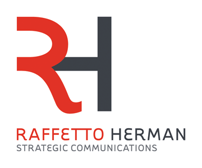Every media outlet is different, and no two reporters are the same. So, how do the top PR pros pitch into the ever-shifting, fast-paced world of U.S. business press? Aside from keeping on top of the trends and bringing reporters hot stories, such as major IPOs and newly minted unicorns, PR pros can maximize the effectiveness of their pitches by focusing on the relationship building aspect of media relations. Rather than templatizing pitches and sending out big email blasts, the most successful PR pros understand the importance of connecting with their media targets.
What strategies do PR pros use to build those relationships with U.S. business reporters? Here are 5 tips from my colleagues at RH Strategic, a communications and PR firm:
1. Do your research. You need to understand the outlet’s interests and the reporter’s beat before you reach out, and you need to keep up to date on changing beats and interests. (This is especially true during the pandemic, with reporters shifting beats.) Spending 15 minutes on a good, targeted pitch for a reporter you have researched is worth far more than spending 15 minutes blasting out copy and paste pitches to a big, impersonal list. How do we know? It gets results.
2. Tailor your approach to the reporter and the outlet. Every outlet has their own unique guidelines, and every reporter works differently. Some will want to text about a story, and some will want one email and one email only. You need to be able to adapt to the outlet and reporter and listen to their feedback. If you are targeting a same-day broadcast, the earlier you pitch, the better. For a longer lead story, late morning is best. And if they tell you not to follow up on social media, don’t — not even when on a deadline.
3. Make the ask (or offer) early. Consider the subject line your first opportunity to grab the reporter’s attention. Getting them to open the email is half the battle, so putting what you have to offer upfront is key. Keep your pitch as short and succinct as possible while still setting the stage for why the story is timely and relevant. Also, don’t be shy about talking up a spokesperson. Why should a reporter talk to them? Where have they been quoted before? Give the reporter a reason to get on the phone.
4. Position yourself as a resource — not the other way around. Only send them story ideas or resources relevant to their beat, and make sure you’re adding value with every note you send. If a reporter reaches out and asks for comment or a quick conversation with a spokesperson, do everything you can to make it happen. Reporters want to know that they can count on you and that you aren’t just using them.
5. Be human. As we like to say, the media are people, too. They have deadlines, bosses, stresses, and lives just, like the rest of us. If you help them, they are more likely to help you (or at least hear you out). That means coming to them with relevant stories, offering to connect them with appropriate spokespeople, and helping them make tight deadlines. Once you establish a relationship, follow them on social and keep an eye out for time-sensitive requests to contribute to a story. Jump on every chance to help and to add a personal touch to your exchanges.
By leveraging these strategies, you can improve your media relations, build strong connections with the reporters and outlets that matter most, and keep your clients top of mind when a reporter is looking for relevant spokespeople and expertise. This advice will work for PR pros in every vertical, whether you specialize in cybersecurity PR, healthcare PR, B2B tech PR, emerging tech PR, or any other sector. Learn more about working with a PR firm like ours or reach out to join our team.
Madison Pappas is a Public Relations Associate at RH Strategic, Seattle, Washington.
This post is part of a thought-leadership series from The Worldcom Public Relations Group featuring media relations best practices and local market insights.
Get the latest PR, IR, Marketing and Media tips on the Business Wire Blog. Subscribe today!







